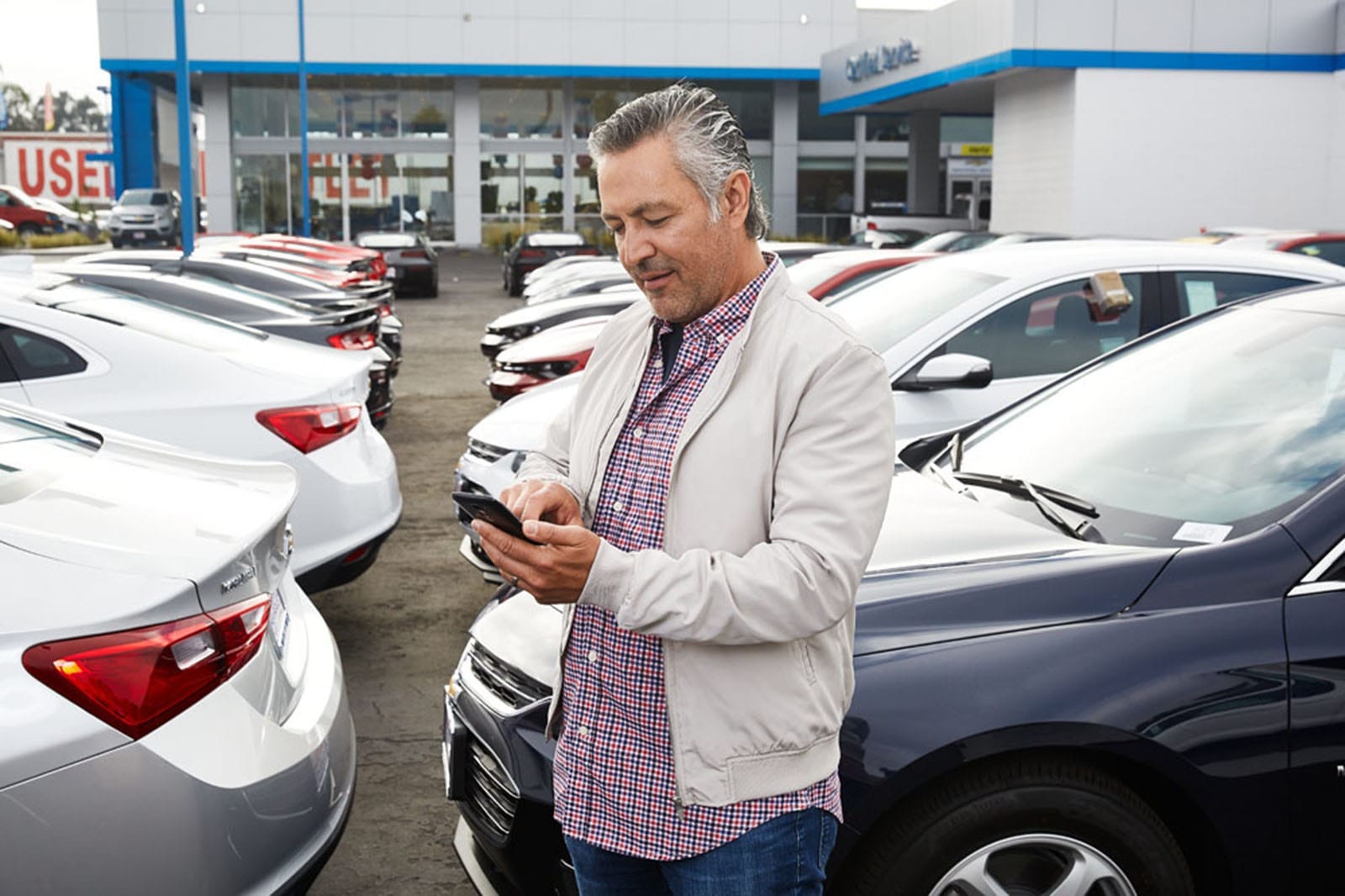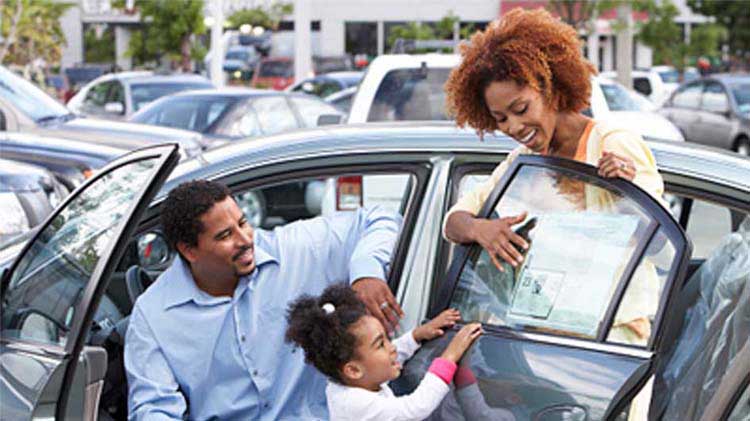How to Buy a Used Car from a Dealer
To buy a used car from a dealer, research the market and visit a reputable dealership prepared to negotiate. Ensure a thorough inspection and test drive before making a purchase.
Buying a used car from a dealer can be a strategic move for those seeking a reliable vehicle without the new-car price tag. With the right approach, you can find a well-maintained car and benefit from the dealer’s accountability and the added protections that come with purchasing from a licensed business.
It’s crucial to do your homework, know your budget, and understand the car’s history. Tapping into online resources to compare models, prices, and reviews will give you a better footing in negotiations and help ensure a smooth transaction. Transparency about the car’s condition and the transaction terms is key to a successful purchase.
Preparing For Your Purchase
Welcome to the essential phase of buying a used car: Preparing for Your Purchase. This step is about smart planning and informed decisions. It lays the foundation for a smooth car buying experience. By setting a clear budget, researching vehicle options, and investigating dealer reputations, you’re paving the way towards driving home in a car that meets both your needs and your wallet.
Set Your Budget
Knowing what you can afford is crucial. Begin with your overall budget. Consider all car-related costs, such as:
- Insurance
- Maintenance
- Gas
- Registration and taxes
Remember, a car payment should not strain your finances. Use online calculators to estimate monthly payments. Stick to a price range that keeps you comfortable.
Research Vehicle Options
Determine your needs before stepping onto the lot. Think about size, fuel efficiency, and features. Sites like Edmunds or Kelley Blue Book provide valuable insights. Here’s a list to guide your research:
- Review car models within your budget.
- Read up on the car’s reliability and maintenance costs.
- Look for safety ratings and user reviews.
- Compare different models and their year-to-year changes.
Arming yourself with this information will help identify the best car for your life.
Check Dealer Reputations
Not all dealers are created equal. Trust and transparency are key. Use the following steps to evaluate dealers:
| Step | Action |
|---|---|
| 1 | Look up online reviews on Google, Yelp, and the Better Business Bureau. |
| 2 | Ask friends and family for recommendations. |
| 3 | Visit dealer websites for customer testimonials. |
| 4 | Consider dealer longevity and community presence. |
Choosing a reputable dealer means a higher chance of a reliable and fairly priced car.
Understanding Car Valuations
Getting a great deal on a used car involves understanding car valuations. A clear grasp of a vehicle’s worth ensures you pay a fair price. Below are key factors to consider to determine a used car’s value accurately.
Use Online Pricing Guides
Start with online resources to find the value of a used car. Websites like Kelley Blue Book or Edmunds offer price estimates. Input the car’s make, model, year, and features to get an accurate market value.
- Check multiple sources for the best estimate.
- Adjust the value based on your region.
Factor In Mileage And Condition
A car’s mileage and condition greatly impact its value. Lower mileage often means a higher value, while higher mileage may lower the price. Ensure to check:
- The vehicle’s service history.
- For signs of wear and tear.
Professional inspections can reveal hidden issues. They can save you money in the long run.
| Mileage | Condition | Adjustments |
|---|---|---|
| Under 50,000 | Excellent | + Value |
| Over 100,000 | Fair | – Value |
Know The Market Demand
The car market fluctuates. Supply and demand affect prices. Popular models or those in shortage can fetch higher prices. Here are factors influencing market demand:
- Time of year (4x4s sell better in fall/winter).
- Trends (fuel-efficient cars may be more in demand).
- Availability (rarer models can command higher prices).
Keep tabs on the car market to spot a good deal. Use reliable data to negotiate confidently.
Contacting The Dealership
Purchasing a used car from a dealership involves several key steps, with the initial contact being crucial. Here’s how to smoothly navigate this process and set up a successful purchase.
Make Initial Inquiries
Start with research to find your desired car. Check the dealer’s inventory online. Look for recent photos and detailed information about the vehicle’s condition. Note the stock number or VIN for reference. Call or email the dealership to confirm availability. Mention the stock number or VIN. Keep your conversation focused and straightforward.
- Review car listings online
- Confirm availability with stock number or VIN
- Contact dealer via phone or email
Schedule A Test Drive
Once a vehicle catches your interest, arrange a test drive. Call the dealer to select a date and time. Ensure the car is not sold before your visit. Ask for the car to be reserved for your test drive.
- Choose a suitable date and time
- Call the dealership
- Request a reservation for the drive
Ask The Right Questions
Prepare a list of questions before visiting the dealership. Focus on vehicle history, service records, and previous ownership. Inquire about any warranties or dealer guarantees. Check for pending recalls or ongoing maintenance issues.
| Topic | Questions to Ask |
|---|---|
| History | Can you provide the full vehicle history report? |
| Service Records | Are service records available for review? |
| Warranty | Does the car come with a warranty from the dealership? |
| Recalls | Are there any outstanding recalls on the vehicle? |

Credit: www.edmunds.com
Inspecting The Vehicle
Before taking a used car from a dealer’s lot into your driveway, it’s essential to do a thorough inspection. This step is crucial to ensure you invest smartly in a reliable vehicle. Let’s walk around the car, peek under the hood, and scrutinize its history to make an informed decision.
Examine The Exterior And Interior
Examining the car’s exterior reveals its life story.
- Check for scratches, dents, and rust.
- Ensure all doors, and the trunk, open and close smoothly.
- Look at the glass for cracks or chips.
- Examine the tires for tread wear and evenness.
Moving inside, the interior tells you about the car’s care.
- Inspect seats for tears or stains.
- Test all buttons, switches, and the sound system.
- Notice any unusual odors.
- Check the trunk for dampness or damage.
Look Under The Hood
A peek under the hood tells a lot about the car’s health.
Scan for any leaks or corroded parts.
Oil should be clean, not dark and gritty.
Battery terminals should be corrosion-free.
Hoses and belts should not have cracks or wear.
Review Vehicle History Report
A vehicle history report shines a light on the car’s past.
| Report Detail | Why It Matters |
|---|---|
| Past ownership | Reveals how often the car changed hands. |
| Service records | Shows if regular maintenance was done. |
| Accident history | Uncovers any previous damage. |
| Title status | Checks for any liens or salvage title. |
Negotiating Your Deal
Buying a used car from a dealer often involves negotiation. You can get the best price with the right techniques. This section guides you through the process of haggling, understanding financing options, and the importance of being willing to walk away if the deal doesn’t meet your needs.
Understand The Art Of Haggling
Haggling is a skill that can save you money. Start by researching the car’s value. Websites like Kelley Blue Book can help. Know the market value of the car before you visit the dealer. This knowledge is a strong tool in negotiations. Also, observe the car’s conditions, such as mileage and maintenance records. Use any flaws to negotiate a lower price.
Discuss Financing Options
Dealers often offer financing options for your purchase. Understand the terms before signing anything. Compare the dealer’s financing with your bank or credit union. Show the dealer you have other options. This can lead to better terms from them. Ask about down payment, interest rates, and loan terms. Take notes, and don’t rush your decision.
Be Ready To Walk Away
Sometimes, the best way to get a good deal is to be ready to leave. If the price is too high, be firm and prepared to walk away. This can show the dealer you’re serious. They may offer a better deal to keep you there. Remember, there are other cars and dealers. Don’t settle for a bad deal.

Credit: www.statefarm.com
Completing The Transaction
Completing the Transaction marks the final stretch in securing your used car from a dealer. It’s a critical phase that requires a sharp eye and a clear understanding of what you’re signing. Remember, this isn’t just any purchase—it’s an investment. Let’s ensure it’s done right.
Review The Contract Carefully
Scrutinizing the contract is not just about spotting typos. It’s about confirming that all verbal agreements made are on paper. Look for the following:
- Vehicle price
- Warranty details
- Service agreements
- Financing terms
- Mileage and condition statements
Dual-check everything. Ask questions if something is unclear. It’s better to spend an extra hour reviewing than to regret later.
Check For Dealer Fees
Dealers can tack on various fees that may hike the car’s price:
| Common Fees | Details to Review |
|---|---|
| Documentation Fee | Necessary processing charges. Vary by location. |
| Destination Fee | Cost of transporting the vehicle to the dealership. |
| Advertising Fee | Marketing costs possibly passed on to buyers. |
Be sure to discuss all fees with your dealer. If certain charges seem off, don’t hesitate to negotiate them down or out of the contract.
Finalize Insurance And Registration
The last step before you drive off is to sort out insurance and registration. You can’t hit the road without these:
- Get insurance quotes ahead of time.
- Choose a policy that fits your needs.
- Dealer might offer registration services. If not, visit your local DMV.
Once your insurance policy is active and the car is registered in your name, you’re all set. The keys are now yours—congratulations on your new ride!
Post-purchase Considerations
Congratulations on your used car purchase from the dealer! Now, let’s ensure your ride stays smooth with essential post-purchase considerations. These steps guarantee peace of mind and protect your new investment.
Secure A Warranty Or Service Contract
Always safeguard your purchase with a warranty or service contract. It’s about being smart with your finances. A warranty can cover unexpected repair costs, keeping your savings intact.
- Review coverage details: Know what’s included and for how long.
- Understand deductibles: Find out costs for service claims.
- Dealer warranties vs third-party: Choose the best fit for your needs.
Plan For Maintenance And Repairs
Stay ahead of car troubles with regular maintenance. It ensures your vehicle runs like a dream and lasts longer. Set up a maintenance plan as soon as you drive off the lot.
Keep these in mind:
- Follow the recommended service schedule.
- Set aside a budget for wear-and-tear repairs.
- Find a trustworthy mechanic familiar with your car’s model.
Update Personal Records
Keep your documents current after buying your car. It’s not just about driving. It’s about responsible ownership. Update personal records promptly to avoid any hiccups with your vehicle’s documentation.
| Record Type | Action Required |
|---|---|
| Vehicle Title | Transfer to your name |
| Registration | Renew annually or as required |
| Insurance Policy | Update with new vehicle details |

Credit: www.ramseysolutions.com
Frequently Asked Questions For How To Buy A Used Car From A Dealer
What To Check When Buying A Used Car?
Before purchasing a used car, inspect the vehicle’s history, maintenance records, and mileage. Test drive to evaluate performance and check for signs of wear or damage. Verify the car’s title status and ensure no outstanding liens.
How Do I Negotiate With A Car Dealer?
Start by researching the car’s market value to establish a baseline. Make a lower initial offer and be prepared to walk away if necessary. Focus on the total cost rather than monthly payments, and don’t rush the negotiation process.
Is It Safe To Buy A Used Car From A Dealer?
Yes, it’s generally safe to buy a used car from a reputable dealer. Dealers often provide warranties and must adhere to strict consumer protection laws. Ensure thorough inspection and consider certified pre-owned options for added security.
What Are Hidden Fees When Buying Used Cars?
Hidden fees can include documentation fees, dealership fees, and preparation fees. There may also be charges for transferring the title and registration. Always ask for a breakdown of additional costs before finalizing the purchase.
Conclusion
Navigating the used car market need not be daunting. With the right dealer, thorough research, and sharp negotiation skills, you’ll make a smart purchase. Remember, clarity on your needs and budget sets the groundwork. Let due diligence guide you to an informed choice and a satisfying investment in your next vehicle.
Drive home with confidence!





